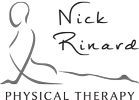Centralization of the Cervical Spine Mck Institute
https://www.facebook.com/140277053186246/posts/285374308676519/
More (formerly Mechanical Diagnosis and Therapy of Portland, PC)
(formerly Mechanical Diagnosis and Therapy of Portland, PC)
https://www.facebook.com/140277053186246/posts/285374308676519/
Morehttps://www.facebook.com/139184759454589/posts/2108271199212592/
MoreI’d like to share with you a recent patient success story from Nick Rinard Physical Therapy. Our story begins with a 10 year old girl (we will call her Artemis for this article) who had a disastrous landing while playing on her trampoline in her backyard. Artemis’ back injury was very upsetting to her because it occurred just a few weeks before her end of the year dance recital. She was frustrated because her attempts to participate in dance class weren’t going well despite her desire to succeed. She was unable to lift her leg above her knee level due to her back pain. Thankfully, her parents were proactive and brought her to our clinic for treatment just 3 days after her injury.
When I examined her, Artemis was having difficulty finding a comfortable position sitting on the exam table. Pain was driving her to fidget and her restlessness was creating fatigue which further aggravated her symptoms in a vicious cycle. Even her walking pattern had been altered, and she had a difficult time separating the movement of her shoulder and hip on the left side.
Artemis’ treatment plan targeted stretching of her injured muscles, restoring normal movement patterns, and building strength in her lumbopelvic stabilization muscles.
Due to timely intervention and excellent follow through with her home exercise program, Artemis made a full recovery and was able to shine on the stage for her dance recital!
So, if you or your children are being limited by injury, take a lesson from Artemis’ excellent example and seek our help sooner rather than later. We’ll get you back on your feet and performing at your best! The show must go on!
Morehttps://www.facebook.com/140277053186246/posts/262774000936550/
Morehttps://www.facebook.com/139184759454589/posts/2075892472450465/
Morehttps://www.facebook.com/mdtclinics/posts/10156383730677442
Morehttps://www.facebook.com/140277053186246/posts/255690961644854/
Morehttps://www.facebook.com/mckenzieinstituteinternational/posts/252007585346525
Morehttps://www.facebook.com/140277053186246/posts/257362901477660/
Morehttps://www.facebook.com/139184759454589/posts/2056699014369811/
More